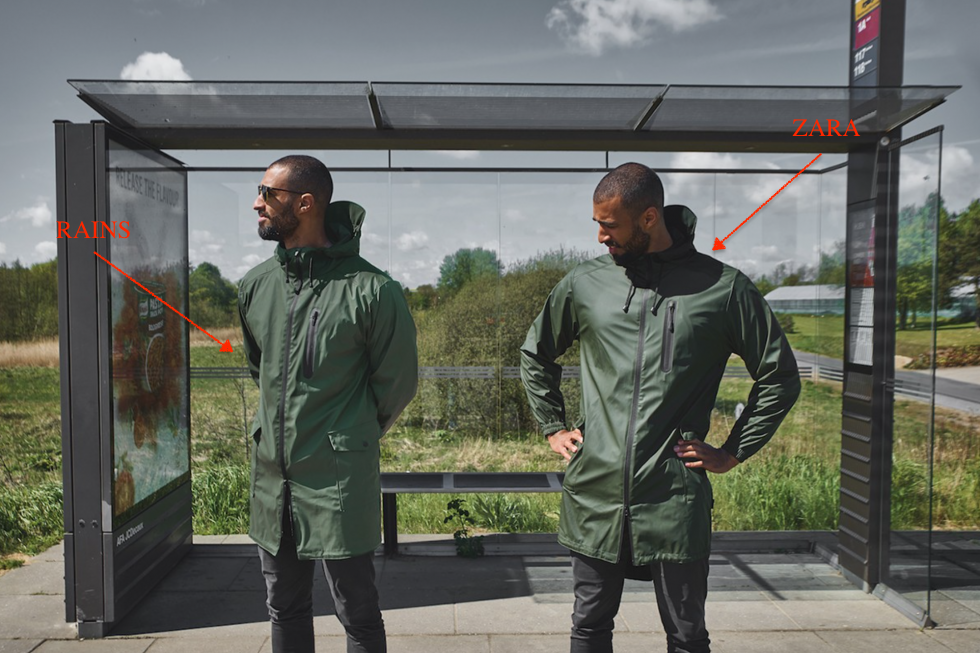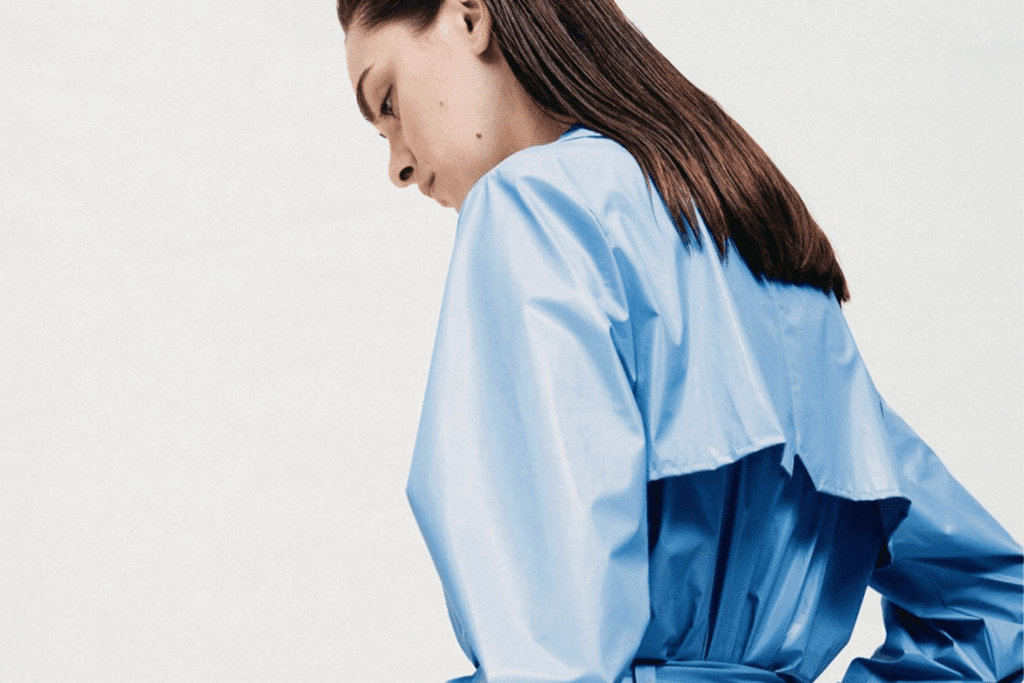Rains has been handed a win in its years-long fight against Zara for selling cut-and-paste copies of two of its best-selling rain coats. The buzzy Aarhus, Denmark-based outerwear company filed suit against Zara and its parent company in April 2017, alleging that the Spanish fast fashion behemoth had “slavishly copied” two of its signature – and most widely-recognized – raincoat designs, thereby, giving rise to infringement claims under Danish law, and in a decision last month, the court sided with the burgeoning brand … to an extent.
In a decision dated May 15, the Danish Commercial Court initially held that Rains’ two coats – the Long Jacket and Parka Coat – are not protected by national copyright law. Specifically, the jackets at issue do not meet the requirement that in order to be protected by copyright law, an item of clothing must be an original product that is the result of the creator’s free and creative choices, as the Court of Justice of the European Union set out in its landmark decision in Cofemel, C-683/17.
According to the Danish Commercial Court, the Rains coats – which have found fans across the globe for their clean, cool silhouettes – fail to meet that standard, due, in large part to the fact that the design of the coats is the result of technical function, and thus, do not fall within the bounds of the Danish Copyright Act. As the court held in Cofemel, a design – even if useful – will only be subject to copyright protection if it is the result of creative design choices that go beyond the purely functional elements.
Not all was lost for Rains, though, as the court determined (in a trade dress-like finding) that while the two coat designs may not enjoy copyright protection, they have amassed the requisite level of distinctiveness among the consuming public to be protected against unauthorized replication under the Danish Marketing Act, which prohibits the use of confusingly similar trademarks or other distinctive business marks or designs. The court held that based on the “independent and minimalistic impression” that the coats present and the level of quality at play, and presumably given the consistent use of the designs by the 8-year old brand and the level of success that the brand as a whole and the individual jackets, themselves, have enjoyed, Rains has trademark-like recourse against Zara.

The brand argued in its complaint that its coats have “acquired distinctive character through marketing,” and therefore, “enjoy protection against product imitations” in accordance with the Marketing Act and Danish case law. In terms of establishing secondary meaning, Rains pointed to the fact that both its “Long Jacket and Parka Coat have been marketed intensively in a variety of contexts since 2012,” including “through a number of international channels and social media, such as Instagram.” Rains also noted that it maintains a list of 4,600 retailers that sell its coats in 20 different countries across the globe, and as a result, the brand and its wares have “gained massive media awareness [beginning in] 2012.”
The court agreed, ordering Zara to immediately and permanently cease its manufacturing and sale of copycat versions of the two coats.
“The case does not consider design as a possible protection as the coats were introduced to the market in 2012,” according to Johanne Mørk Ahrensbach, an intellectual property associate at AWA’s office in Denmark. “Any applicable protection as an Unregistered Community Design would have expired in 2015.” While “the three-year protection offered to unregistered designs is sufficient for clothing, considering the speed at which fashion moves,” she notes, in the case at hand, such protection is largely inappropriate given the nature of Rains’ jackets, which are not merely seasonal products, but instead, staple goods that the company keeps in its stable of goods and produces each year, instead of swapping them out for trend-specific, seasonal offerings.
As such, Ahrensbach asserts that “for brands producing long-lasting and timeless products, design registration with protection for up to 25 years, can be worth pursuing,” and notes that the case “is an important reminder for brands that want to protect products from copycats that design registration is an important mechanism that not only protects the designs, but may also act as a deterrent” against copycats.
In terms of the decision, Ahrensbach notes that “the fact that Zara instructed their Chinese manufacturer to produce exact copies may also have been a deciding factor” for the court, a nod to Rain’s production of evidence in the form of declarations from Jiang Hiajun and Wu Xinqiang, the owners of two garment factories in China, who confirmed that they were each approached in the spring of 2015 by an agent for Zara, requesting that they manufacture raincoats. According to both declarations, Mr. Jiang and Wu both assert that they were both presented with “a copy of a Rains jacket, and requested that [they] manufacture identical [products] in terms of look, feeling, and strength.”
Reflecting on the company’s win, Rains’ co-founders, Daniel Brix Hesselager says that the brand “wants to show that global giants cannot unimpededly steal designs and violate rights as a part of their business model.” He further asserts, “We are aware that many professionals in and outside of the fashion industry have been anticipating the result of this lawsuit to potentially follow in our footsteps. We aim to encourage more companies to take up the fight.”
* The case is Rains ApS v. Industria de Diseño, S.A.; Fashion Retail, S.A., and Zara Danmark A/S, V-30-17.











